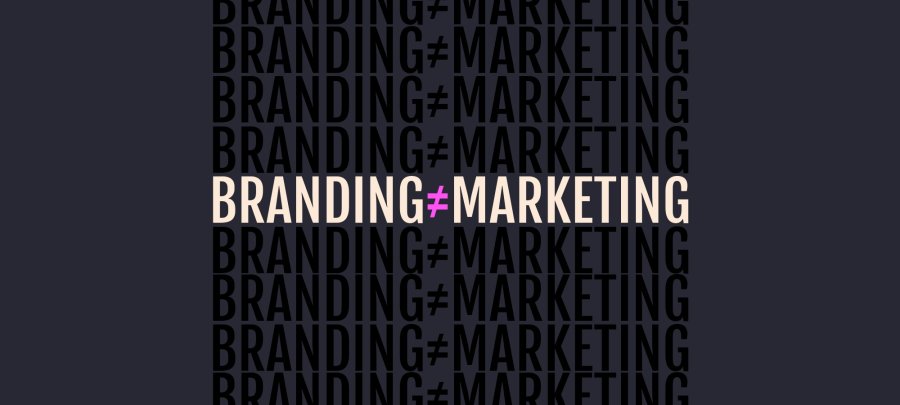The Top 6 2025 Marketing Predictions | Tourism Marketing Predictions You Need to Know
January 3, 2025
In 2024, we saw savvier travelers and technology moving at warp speed. Destinations that want to go big in 2025 need to ditch the “same old, same old” playbook. Innovation, adaptability, and some serious creative thinking are the way forward.
So, let’s break it down. These six 2025 tourism marketing predictions, from authentic and inclusive storytelling that speaks to you to the continued rise of AI, will help your destination stay ahead of the game this year. These are the things we expect to see in 2025 and beyond.

authentic storytelling
We’ve all heard it: authentic storytelling is at the heart of great destination marketing. But guess what? Everyone’s doing it now. So the question becomes, how do you differentiate your approach in storytelling from the rest?
The answer? Hyper-relevant storytelling that feels personal to individuals, almost like the destination knows them. The “we have something for everyone” approach isn’t enough anymore. Brianna Francis, our very own Public Relations Director captured it perfectly, “Leaning into what your destination is really good at, moving away from the ‘we have something for everyone’ approach, and leaning into the authentic product you have will be very important going into the new year.” Focus on specific, niche narratives that attract people’s interests and values.
- Highlight unique cultural pockets: Does your town have a late-night taco crawl that only locals know about? Tell that story to cater to foodies and the late-night crowd.
- Speak to mico-audiences: Nature lovers, history buffs, craft beer enthusiasts; cater to groups with experiences tailored specifically to their interests, needs, and wants.
- Focus on short-form video: When it comes to micro-audiences, micro-moments are a great fit! Focus on TikTok, Instagram Reels, or Youtube shorts as primary growth channels to meet travelers on their algorithm.
Quick tip: Partnering with niche content creators who can tell stories their audiences want to hear, like a Gen Z food vlogger showcasing a destination’s best dessert spots.
When it comes to partnering with content creators and influencers, there are some differences you need to factor in to your goals and approach:
- Content Creators focus on storytelling, artistry, and engagement with niche communities.
- Influencers often prioritize reach, visibility, and relevant brand partnerships.
In 2025, short-form video will still dominate. TikTok Instagram Reels, and Youtube shorts are where people are discovering destinations, one swipe at a time. The winning formula? Partnering with diverse creators who tell stories through a multicultural or niche lens.
“Smaller, independent media — like Kylie Kelce’s podcast and other grassroots creators — is reshaping how audiences engage with content, offering a shift away from major media conglomerates to a more personalized, free press vibe,” said our CEO, Dan Janes. “This trend extends to long-form platforms like YouTube, where creators invite audiences into their lives in authentic ways. For DMOs, this raises a thought-provoking question: should destinations be hosting podcasters or partnering with local creators to elevate their voices? Whether through brand collaborations, supporting community podcasters, or investing in open studios to attract media creators, destinations have a unique opportunity to tap into this growing trend and spark conversations about their community.”
Think a content creator showcasing your hiking trails to outdoorsy millennials, or micro-influencers highlighting local Black-owned businesses for travelers seeking culturally rich experiences. By tapping into diverse and authentic voices, destinations can inspire meaningful connections and turn casual viewers into eager visitors.

The continued rise of ai in tourism marketing
One of our biggest 2025 marketing predictions is the continued rise of AI. If you’re behind the curve on using AI tools, you’re leaving massive opportunities on the table. In 2025, AI isn’t optional anymore, it’s a must for efficiency and optimizing productivity across your team.
Google’s AIOs (AI overviews) have already dominated search results across industries. Just a few months ago, our team was seeing only 2% of travel related terms including AIOs, that number has quickly risen to 7% in the last few weeks, indicating that this new search experience is here to stay.
We also expect OpenAI to monetize ChatGPT and move into paid ad spaces as more brands want to appear in generative search results as well as organic search results on Google. Destinations will need to prepare for this new media opportunity and to optimize content for generative engines as well as search engines with GEO (generative engine optimization).
Which brings us to another important AI element for 2025 — when it comes to GEO and SEO and the ever-evolving world of organic search, clicks are great, but in 2025, engagement metrics are where it’s at. Impressions, scroll time, and meaningful engagement metrics will matter more than ever.
Organic clicks will decline in 2025, but don’t panic! With search trends and behaviors changing, we need to focus on how users are engaging with your content, and less on whether or not they clicked it.
Our very own SEO expert Dylan Scacchetti said it best, “Many partners of ours are seeing numbers decreasing year-over-year and thinking it’s something they’re doing wrong, that’s just not true, it’s that we’re in an entirely different playing field.”
Imagine Google is a super helpful robot librarian, ready to answer your questions at lightning speed. You ask, “What is the best place to eat tacos?” Instead of making you open a bunch of books (or in this case, websites), the librarian now gives you the answer immediately on the spot. That’s what Google’s AI Overviews are doing.
Now some people may think, “Oh no! My clicks are going down!” But here’s the thing: if Google shares your answer first, that means you’re already winning because the librarian (Google) trusts you to have the best answer.
Here’s why AI Overviews and fewer clicks aren’t the end of the world:
- People still see your content. Even if they don’t click, they’re learning about you. They might come back later, search more, or visit in real life because you were top of mind.
- Clicks aren’t everything anymore. What matters more is how users are engaging with your content. Did they scroll through your site? How long did they stay on your site? Did they read multiple blogs, or share one with their friends? These actions show how your content is resonating with audiences.
What we focus on now:
- How long people spend with your content: are they reading or skimming?
- If they engage: do they click around? Watch videos? Download guides?
- If they take action: Did they sign up for your newsletter? Book a trip? Build an itinerary?
Building confidence around engagement metrics (not just clicks) will be pivotal for destinations in 2025. We’ve already started building solutions for the future of search, focusing on what we call a Content Confidence Score. It gathers data to better understand content resonance and engagement metrics to better guide content strategy in the realm of AI Overviews.
The TL;DR here is that focusing on quality content, written in human language patterns, that answers questions and educates is the way to go. This goes back to foundational best practices in the early days of SEO, focusing on high quality content that informs and drives action is how destinations win in 2025.

Seeking Inspiration from lifestyle & Brand marketing
In 2025, DMOs won’t just sell a place, they’ll sell a feeling. Brand marketing is about positioning your destination like a lifestyle brand, which will become more and more important over the next year. Here’s how:
- Partner with niche and relevant brands. Team up with recognizable names that align with your vibe, whether that’s an outdoor gear company for adventure tourism or a food festival that screams chef’s kiss.
- Learn from consumer brands (not just other destinations). Understand the psychology of persuasion, storytelling, and how to create an emotional connection. DMOs can learn a lot from emotionally evocative brands like Nike, Apple, or Patagonia.

paid media evolution in 2025
Let’s be honest, we all know that paid ads aren’t going anywhere. But they are changing! Here’s our key takeaways for 2025 tourism marketing predictions in paid media:
- AI-powered ads: AI will reshape how destinations allocate ad spend with the innovation around monetizing AI platforms like ChatGPT.
- Cross-industry inspiration: Building off our previous point, stop copying other DMOs and start looking at direct-to-consumer brands for ideas. They know how to engage, convert, and connect with people in a way that evokes emotion and creates a lasting connection.

set-jetting
Thanks to pop culture and the age of streaming, travelers are increasingly seeking out destinations based on their favorite films and shows. This trend, called set-jetting, is becoming a major player in the tourism market.
Whether you already have a film commission, or are just starting to look at bringing film economy to your destination, there are a few ways destinations can prepare for this trend in 2025:
- Why set-jetting matters: Destinations featured in movies or series see huge tourism spikes (places like Croatia and Dubrovnik are still seeing tourism booms after Game of Thrones)
- If you build it, they will come: Showcase behind-the-scenes spots, host themed tours or partner with studios to host activations in your destination.

sports tourism: a growing powerhouse
Sports fans are showing up and spending big, and the rest of the decade is packed with global and domestic sporting events that will supercharge travel within the U.S. Between the World Cup in 2026, and hosting the Olympics in Los Angeles in 2028, many destinations across the country will host local and international travelers looking to get in on the action.
Our CEO, Dan Janes, added, “Sports and travel are becoming increasingly global, with international events like the NFL’s games abroad and American travelers seeking out soccer matches in Europe. Youth sports, meanwhile, are at a fever pitch, driving travel opportunities for families — but not without challenges. The rising costs, logistical stresses, and emotional toll on parents mean DMOs have an opportunity to position sports tourism as more than just ‘the game.’ By addressing these pain points and focusing on meaningful experiences, destinations can attract everything from pickleball tournaments to youth sports events, offering a fresh approach to sports-driven travel.”
It’s important to remember, it’s not just the pro sports. Youth sports and amateur leagues are driving families to turn weekend tournaments into mini-vacations. Think hotels, restaurants and local attractions all benefiting from this growing niche audience.
so, what’s next? 2025, here we come!
If you take one thing away from these predictions, let it be this: Adaptability wins. Tourism marketing predictions for 2025 are about embracing new tools, exploring creative opportunities, and focusing on engagement-first strategies.
Stay ahead of the curve, start testing AI integrations, building niche partnerships, and creating content that speaks directly to travelers.
Ready to hit the ground running? Let’s get your 2025 marketing plans aligned with the trends that matter most. Reach out today, and let’s make some magic in your destination.



